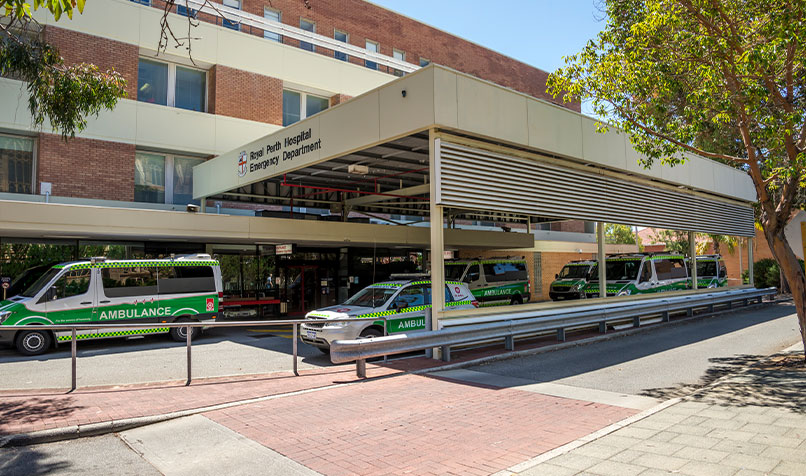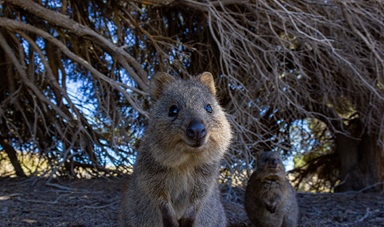Loading component...
At a glance
The Western Australian Government’s major areas of focus in its 2021-22 budget include infrastructure, health, delivering its election commitments and banking a $5.6 billion surplus.
For business, the budget doesn’t yield many new announcements. It does, however, include $100 million to establish the Investment Attraction and New Industries Fund and puts $750 million towards a Climate Action Fund.
Dr Jane Rennie, CPA Australia’s General Manager External Affairs, says that the headline numbers in the budget are enviably strong. WA is the only Australian state or territory economy in surplus in 2020-21, with government revenues for that financial year growing 25 per cent, thanks to a spike in the iron ore price.
“Physical isolation from the rest of Australia has allowed mineral extraction to continue uninterrupted. As a result, WA has recorded a growth rate stronger than almost anywhere in the world.”
The major contributors to the surplus were pandemic-related spending being much lower than forecast, due the state’s success in minimising COVID-19 outbreaks and a jump in royalties from iron ore.
“Iron ore royalties, which flow directly to WA rather than the Commonwealth, have delivered rivers of gold into the state’s coffers, but this may slow before too long,” says Rennie.

The budget anticipates the price of iron ore will more than halve from US$154.50 a tonne in 2020-21 to US$66 over the next two years. This will have a significant impact of the government’s revenue, with iron ore royalties expected to drop from $11.3 billion to $5 billion for 2022-23.
There are no tax cuts or increases in the budget.
“The size of its budget surplus puts WA in a unique position to pursue taxation reform. It’s likely that concern about potential risks to revenue has curbed the government’s desire for reform,” says Rennie.
The government has committed $750 million to a Climate Action Fund, which includes $350 million to expand the state’s softwood plantation estate.
“We commend the WA government for making a significant commitment to building an environmentally sustainable economy,” says Rennie.
The 2021-22 budget includes a forecast surplus of $2.8 billion and net debt of $32 billion. The government is forecasting surpluses in each year until at least 2024-25.
“Now is the time to take these windfall gains and invest in the state’s future,” says Rennie.
“The predicament for the government is how to do this while borders are closed and the labour market remains tight.”
“Labour shortages will act as an anchor on the WA economy until the state’s borders re-open’” says Rennie.
“Labour shortages go hand in hand with wage pressure. WA currently has the fastest growing wages in Australia. Big business can better withstand short-term wage growth, but this may well challenge the profitability of WA’s small business sector.”
WA’s economic and fiscal outlook
In the 2020-21 budget, the state government forecast a surplus of $1.2 billion for 2020-21. The government is now reporting surplus of $5.6 billion for that fiscal year.
An increase in spending on health, infrastructure and the delivery of election promises, combined with a fall in the price for iron ore is expected to see the surplus shrink to $2.8 billion in 2021-22.
The WA economy is forecast to grow by 3.5 per cent in 2021-22, higher than the government’s previous forecast of 2.75 per cent growth. The pace of growth is forecast to slow to 1 per cent in 2022-23.
WA’s unemployment rate is expected to average around 4.5 per cent over the next four years. Population growth, a key factor in economic growth and filling the state’s labour shortages is expected to remain subdued at 0.7 per cent in 2021-22 and 0.8 per cent in 2022-23, well down from 2019-20’s gain of 1.5 per cent.
The state’s net debt is forecast to reach $32.1 billion at 30 June 2022, which compares very favourably to Victoria’s projected net debt (before their current lockdown) of $102.1 billion.
By 30 June 2025, WA’s net debt is expected to reach $36 billion, again much better than Victoria’s estimated net debt of $156.3 billion (before their current lockdown).
Major announcements from WA’s 2021-22 budget
General business

- $100 million over the next four years to establish an Investment Attraction and New Industries Fund to support economic diversification
- Funding to implement the Jina: Western Australian Aboriginal Tourism Action Plan 2021-2025
- $15 million to establish a Local Manufacturing Investment Fund
- Funding to support the development of a local wind turbine manufacturing industry
- $59 million over 2020-21 and 2021-22 to meet claims under the Small Business Lockdown Assistance Grants program
Infrastructure
- Funding to build around 3300 new social homes
- $1.5 billion to be spent on METRONET projects in 2021-22, including completion of the Forrestfield-Airport Link
- $11.7 billion in road projects over the next four years including:
- Tonkin Gap works, as part of the Tonkin Corridor Upgrades
- $320 million for the Great Eastern Highway Bypass Interchanges
- $232 million for the Mitchell Freeway Extension (Hester Ave to Romeo Road)
- $76 million for the Mitchell Freeway widening southbound from Hodges Drive to Hepburn Avenue
- $139 million for the Stephenson Avenue extension
- $259 million for the Armadale Road Bridge - North Lake Road Flyover;
- $852 million for the Bunbury Outer Ring Road
- $175 million for the Albany Ring Road
- $98 million for upgrades to Great Northern Highway at Ord River in the Kimberley
- $500 million for upgrades and projects at WA ports
- $229 million of additional spending on the METRONET High Capacity Signalling program
- $200 million for upgrades to improve the performance of state’s freight network
- $105 million to build a film studio and screen production facility at Victoria Quay in Fremantle $55 million towards the duplication of the Mandurah Estuary Bridge
- $21 million to construct an electric vehicle fast charging network to facilitate travel outside of Perth
Education and training
- $450 million to build and upgrade schools and school facilities including new primary schools at Shorehaven, Burns Beach, Riva and Treeby
- $80 million to enhance Science, Technology, Engineering and Mathematics in secondary schools and science learning infrastructure in primary schools
- Funding to expand the number of Vocational Education and Training (VET) places by 8000 for Year 11 and 12 school students
- $42 million for 100 FTE school psychologists
- $32 million to subsidise wages for 300 apprentices and trainees employed by Group Training Organisations
- Support for 200 mature age apprentices through covering the wage gap between adult and junior apprentices
Health

- $960 million increase in the WA Health budget
- Funding for 223 general hospital beds and 109 mental health beds
- Funding for community-based mental health accommodation and for additional youth and alcohol and other drugs initiatives. This includes 99 additional positions for Child and Adolescent Mental Health Service
- $495 million for the Mental Health Commission for mental health investments
- $487 million for COVID-19 response measures including quarantine, vaccines and pathology tests
- $100 million emergency department support package
- Health projects being progressed include the:
- New Women and Babies Hospital
- Joondalup Health Campus
- The South Metropolitan specialist mental health hub at Fremantle Hospital
- Upgrades to the Meekatharra Hospital
- Bunbury Regional Hospital upgrade
- Redevelopment of the Geraldton Health Campus
- The new Laverton Hospital
- Tom Price Hospital
- Newman Health Service
- $12 million to implement an Early Childhood Dental Program
Other major announcements

- The creation of a $750 million Climate Action Fund, which includes $350 million for an expansion of the state’s softwood plantation estate, $50 million for standalone renewable energy power stations, $50 million to support the development of a local renewable hydrogen industry, $35 million for clean energy in schools and $26 million for costal erosion hot spots.
- $500 million to upgrade the government’s ICT systems and improve government service delivery and enhance cybersecurity
- a further $136 million for the Building Bonus scheme to meet higher than expected demand for new home construction
- $56 million for the Western Australia Police Force’s operational costs to support the State’s response to COVID-19
- $45 million of additional spending for the Aboriginal Ranger Program
- $27 million over the next four years for initiatives to prevent and support survivors of family and domestic violence, including expanding capacity refuges
- $15 million for the establishment of a new Agriculture Climate Resilience Fund to help Western Australian farmers respond to climate change challenges
- $16 million to increase maintenance on Rottnest Island, including a new battery energy storage system and upgrade of a wastewater pumping station
- $14 million to implement a ban on e-waste entering landfill
- $10 million towards the Processed Oats Industry Growth Partnership to increase the value of the local grain industry
- $3 million towards the Wine Industry Export Growth Partnership
- An advertising campaign to attract interstate and New Zealand workers
For more information visit www.ourstatebudget.wa.gov.au/

